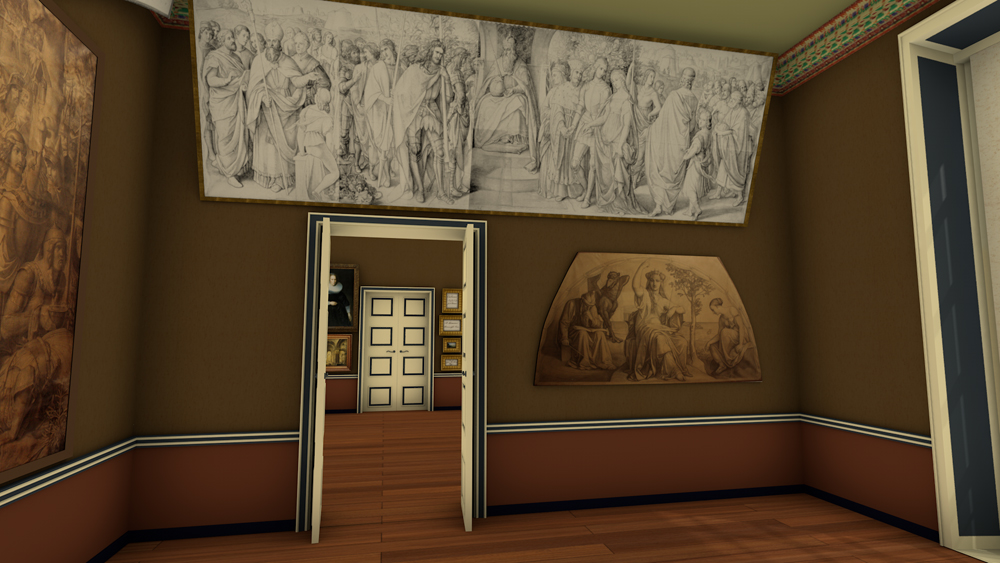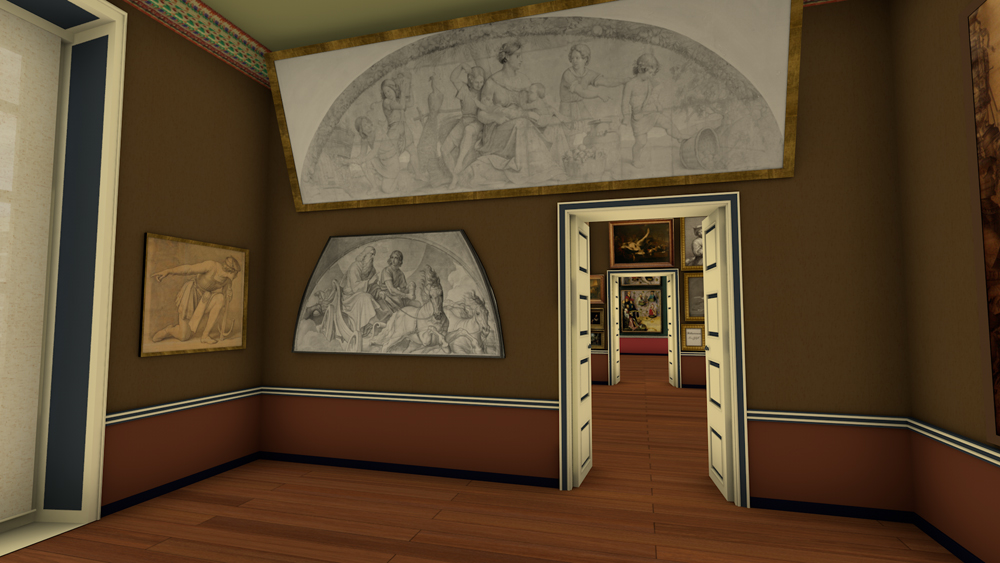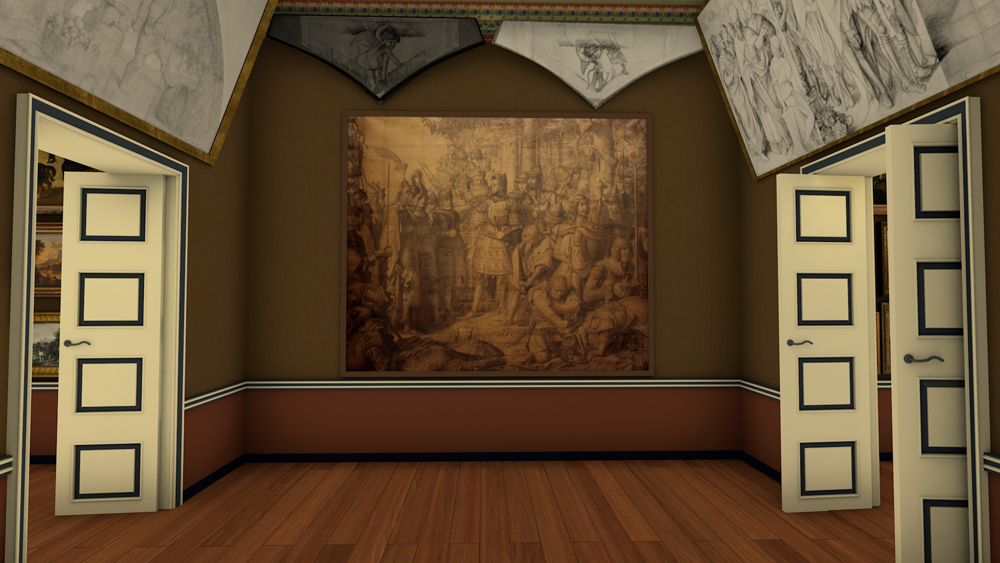1833 Second additional room
Contemporary
art
With only two windows, this smallest room of the wing was suitable for the presentation of a recent focal point of the collection: cartoons by the famous contemporary artists Julius Schnorr von Carolsfeld, Philipp Veit and Carl Heinrich Hermann.
These “cartoons” were the actual-sized design drawings for fresco paintings with which the motifs were transferred to the wall. The decoration of entire rooms with ambitious, painted historical scenes was a specialty of the Nazarenes. From 1815 to 1817, the “Lukas Brothers” had decorated the reception room of the house of the Prussian general consul Bartholdy in Rome with a cycle based on the story of Joseph (today at the Alte Nationalgalerie, Berlin). Among the participating artists was also Philipp Veit, whose design for the “Seven Years of Abundance” was acquired by the Städelsches Kunstinstitut in 1831, shortly after his appointment as director. The frescos of great poets at the Casino Massimo formed a second prominent ensemble of Nazarene art in Rome. One room was dedicated to Dante, a second to Tasso, while the central room was dedicated to Ariosto. These had been realised between 1822 and 1827 by Julius Schnorr von Carolsfeld. Of the in total 11 cartoons bought in 1830/31, only a fraction was put on display at the Neue Mainzer Strasse.

Basis
for the reconstruction
The reconstruction of this room is hypothetical. The publications of the Städelsches Kunstinstitut only tell us that, in 1835, “a number of cartoons for frescos by more recent masters” were exhibited in the wing’s second room.
The anonymous critic of the “Kunst-Blatt” had already reported in March of 1834 that he had seen “Schnorr’s work for the Villa Massimi; Veits ‘Seven Years of Abundance’ for the Casa Bartholdy; Herrmann’s large composition, Emperor Louis IV, etc.” (Kunst-Blatt 1834, p. 84). However, with this remark he refers to the third room of the wing, which was followed by a room for “pictures by living artists”. This statement, which from an art historical viewpoint appears to be more logical, contradicts the fact that, based on surviving hanging plans and the Directory of Paintings of 1835, we know that the third room was specially reserved for Frankfurt painters of the eighteenth century. Its layout with three doors and windows also makes it unlikely that the large cartoons would have been housed here, rather than in the wing’s second room. Regarding the selection of works: in 1844, six cartoons from Schnorr’s Ariosto cycle were exhibited. In the reconstruction presented here, we have combined these with those mentioned in the “Kunst-Blatt”. Insofar as they were included in the inventory books, there were no further cartoons in the collection in 1833. The deciding factor with regard to the distribution of the works across the room was the available space.





